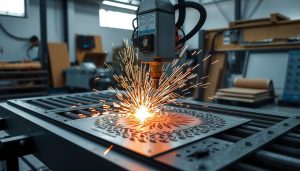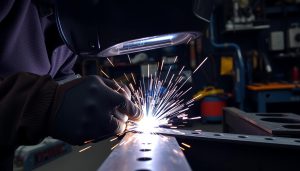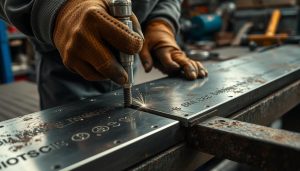Welding is an essential process in numerous industries, from construction to manufacturing. However, even the most skilled welders can encounter various defects that can compromise the structural integrity and appearance of their work. In this article, we’ll dive into the common types of welding defects, their causes, and effective solutions to help you improve the quality of your welds.
Key Takeaways
- Understand the most prevalent welding defects, including lack of penetration, lack of fusion, undercut, and porosity.
- Learn how to identify welding defects early through proper inspection methods and quality control measures.
- Discover the importance of choosing the right welding supplier to ensure high-quality materials and support.
- Gain insights into the factors to consider when selecting a welding supplier for your projects.
- Implement the strategies discussed to enhance your welding skills and produce stronger, more reliable welds.
Types of Welding Defects
Welding, a vital process in various industries, is not without its challenges. Among the most prevalent welding imperfections, weld joint defects, and weld discontinuities are several distinct types that can compromise the strength and integrity of a weld. Understanding these welding flaws is crucial for welders to consistently produce high-quality, defect-free welds.
Lack of Penetration
Lack of penetration occurs when the weld does not fully penetrate the base metal, resulting in an incomplete fusion between the two surfaces. This defect can compromise the structural integrity of the weld and lead to potential failure under stress.
Lack of Fusion
Lack of fusion, also known as cold lap, is a defect where the weld metal fails to fuse properly with the base metal or previous weld passes. This can be caused by improper welding techniques, contaminated surfaces, or insufficient heat input.
Undercut
Undercut is a defect characterized by a groove or depression formed along the toes of the weld, where the weld metal fails to fill the joint properly. This can create a stress concentration point and weaken the overall weld strength.
Porosity
Porosity is the presence of small, gas-filled cavities within the weld metal, often caused by trapped air, moisture, or other impurities. Excessive porosity can compromise the weld’s integrity and make it more susceptible to corrosion and fatigue failure.
“Identifying and addressing welding defects is crucial for ensuring the structural integrity and safety of any welded structure or component.”
How to Identify Welding Defects Early
Identifying welding defects in the early stages is crucial for maintaining the integrity and safety of welded structures. By implementing a robust weld inspection process, fabricators can detect and address issues before they escalate into larger problems. Two key approaches to consider are visual inspection and non-destructive testing.
Inspection Methods for Welding Defects
Visual inspection is often the first line of defense in identifying welding defects. Trained inspectors can closely examine the weld for signs of issues like lack of fusion, undercut, or porosity. This hands-on approach allows for a comprehensive evaluation of the weld’s surface and appearance.
Complementing visual inspection, non-destructive testing (NDT) techniques provide a more in-depth analysis of the weld’s internal structure. Methods such as ultrasonic testing, radiographic testing, and magnetic particle inspection can detect subsurface flaws that may not be visible to the naked eye.
The Importance of Quality Control in Welding
Implementing a robust welding quality assurance program is essential for maintaining high standards of workmanship and safety. Regular inspections, coupled with proper documentation and record-keeping, enable fabricators to identify patterns, troubleshoot issues, and continuously improve their welding processes.
By prioritizing quality control, fabricators can ensure that welding defects are identified and addressed in a timely manner, minimizing the risk of costly rework or potential failures down the line.

How to Choose the Right Welding Supplier
Selecting the right welding supplier is crucial for ensuring the quality and efficiency of your welding operations. When it comes to welding equipment, welding consumables, and welding services, the supplier you choose can significantly impact your project’s success. To make an informed decision, consider the following key factors.
Factors to Consider When Choosing a Supplier
Firstly, evaluate the supplier’s reputation and track record. Look for a supplier with a proven history of delivering high-quality products and reliable certified welders. Reach out to their existing clients to understand the level of customer service and technical support they provide.
Next, assess the supplier’s range of offerings. Ideally, you want a one-stop-shop that can cater to your diverse welding needs, from welding equipment and welding consumables to comprehensive welding services. This ensures seamless coordination and streamlined operations.
Finally, consider the supplier’s certifications and industry affiliations. Look for suppliers who are aligned with recognized welding organizations and adhere to strict quality standards. This assurance of expertise and commitment to excellence can give you peace of mind and confidence in their products and services.





